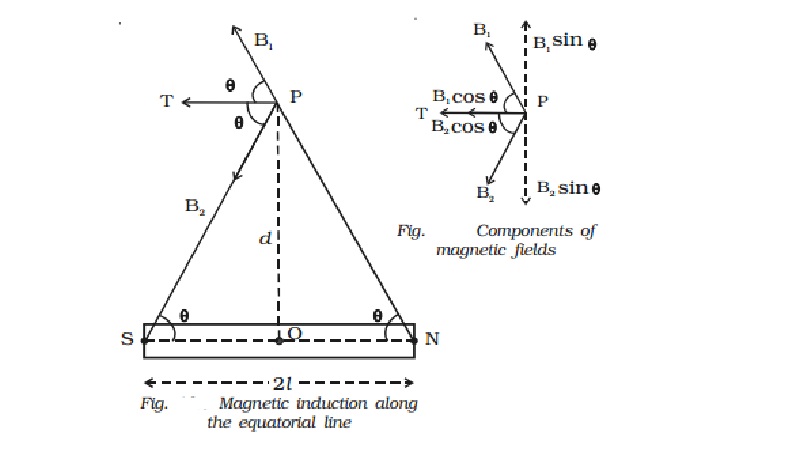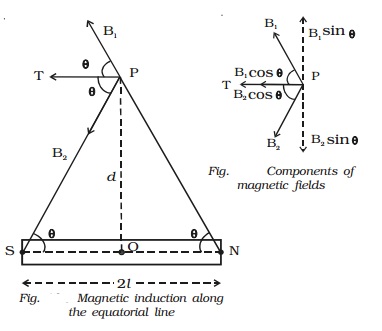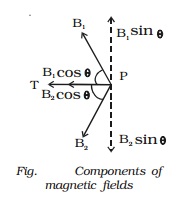Chapter: 11th 12th std standard Class Physics sciense Higher secondary school College Notes
Magnetic induction at a point along the equatorial line of a bar magnet

Magnetic induction at a point along
the equatorial line of a bar magnet
NS
is the bar magnet of length 2l and
pole strength m. P is a point on the equatorial line at a distance d from its
mid point O (Fig.).

Magnetic
induction (B1) at P due to north pole of the magnet,
B1
= ?0/4π . m/NP2 along NP
=
?0/4π . m/(d2+l2) along NP
NP2
= NO2 + OP2
Magnetic
induction (B2) at P due to south pole of the magnet,
B2
= ?0/4π . m/PS2 along PS
=
?0/4π . m/(d2+l2) along PS

Resolving
B1 and B2 into their horizontal and vertical components.
Vertical
components B1 sin θ and B2 sin θ are equal and opposite and therefore cancel
each other (Fig.).
The
horizontal components B1 cos θ and B2 cos θ will get added along PT.
Resultant
magnetic induction at P due to the bar magnet is
B
= B1 cos θ + B2 cos θ. (along PT)
After
apply B1 and B2
B
= = ?0/4π . M/d3
The
direction of ?B? is along PT parallel to NS.
Coulomb?s inverse square law
Coulomb?s inverse square law
states that the force of attraction or
repulsion between the two magnetic poles
is directly proportional to the product of their pole strengths and inversely
proportional to the square of the distance between them.
Related Topics